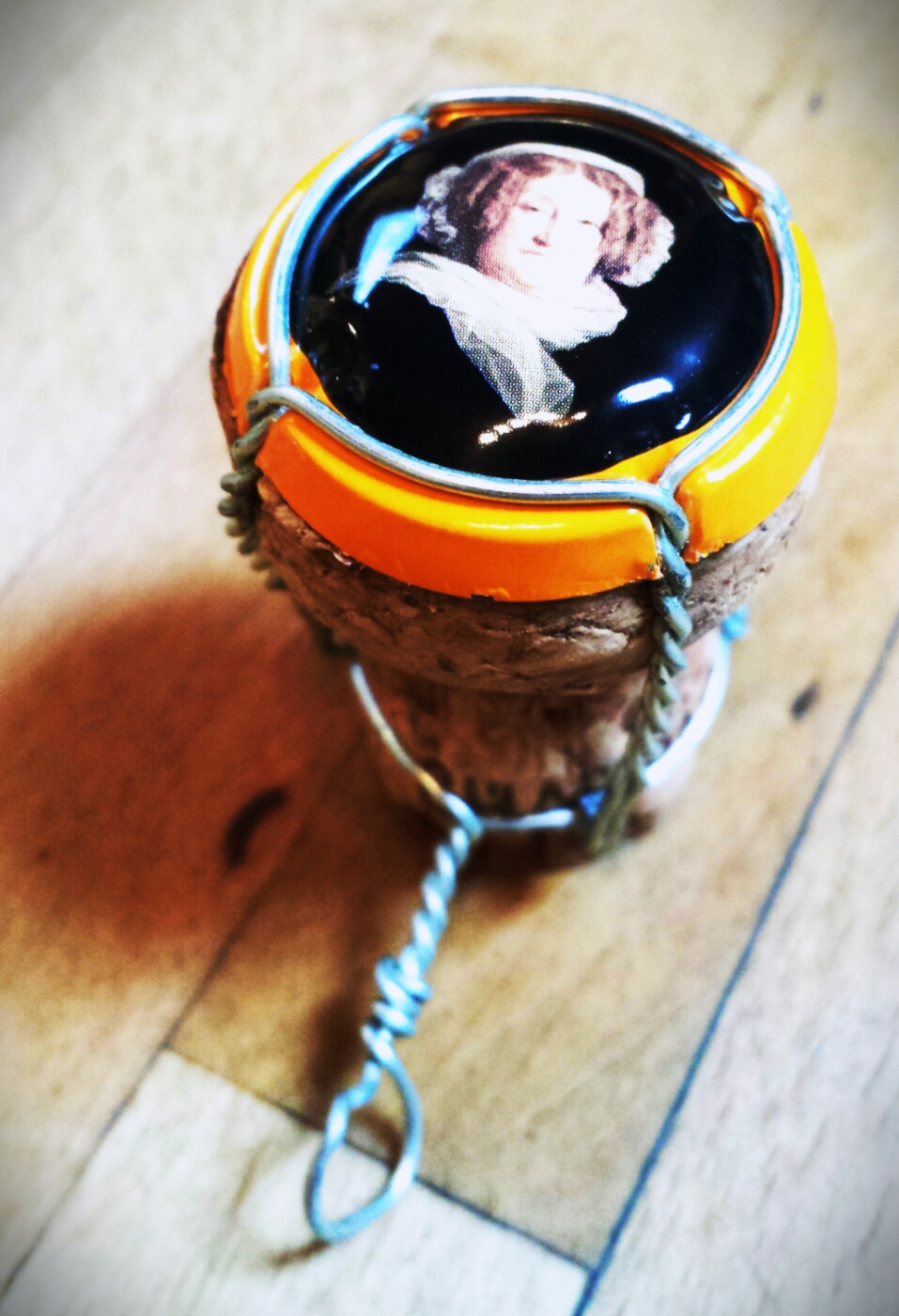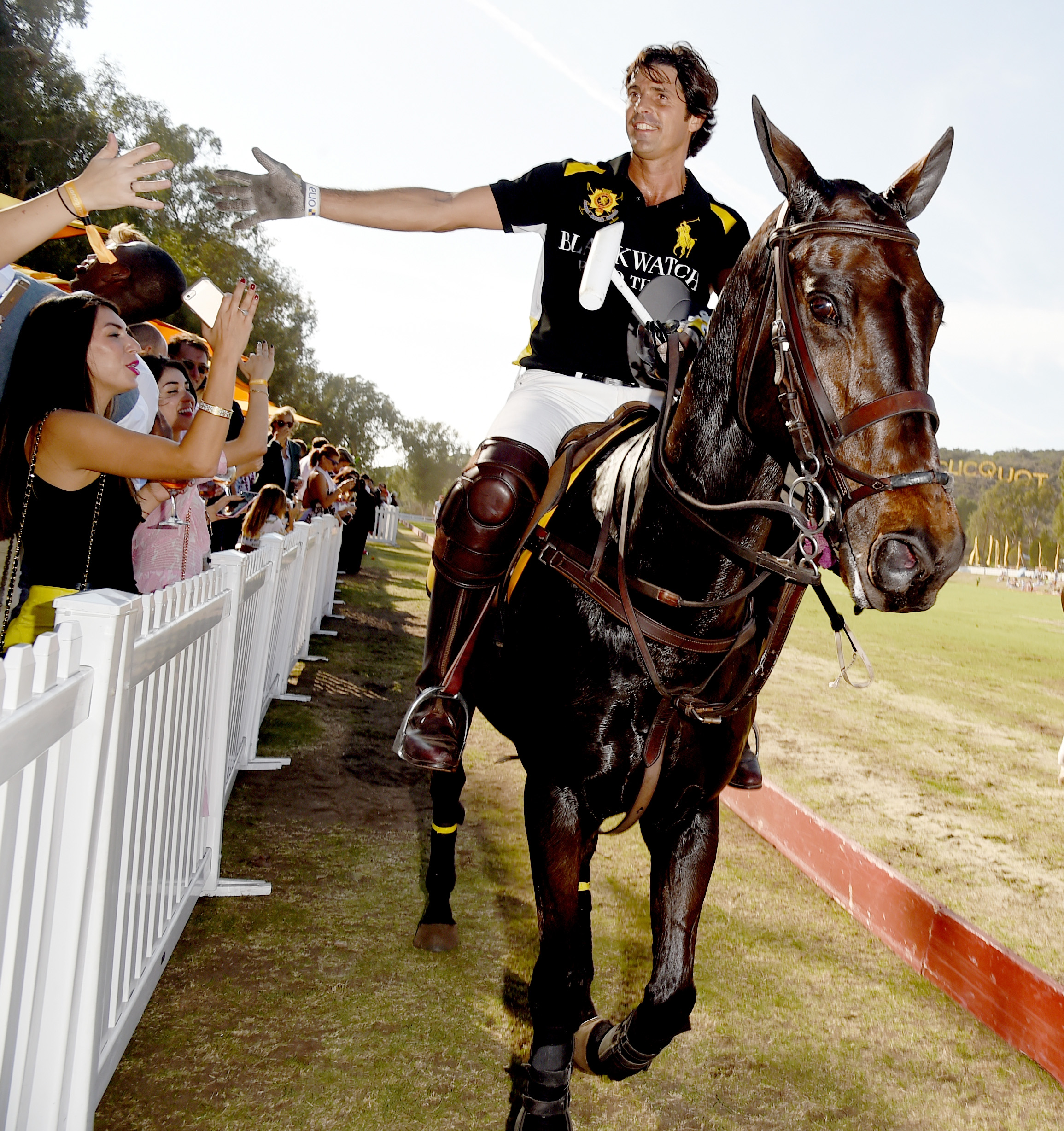On Saturday, October 17, Veuve Clicquot held its Sixth Annual Polo Classic at Will Rogers State Park in Los Angeles, California. The event drew over 5,000 attendees, including celebrity stylist Rachel Zoe, reality star-turned-fashion designer Lauren Conrad, and the one polo player anyone’s heard of, Nacho Figueras, who, in addition to captaining the polo team Black Watch, also serves as the face of Ralph Lauren’s World of Polo fragrances. The women wore hats, and the men wore bowties, all at the behest of a champagne available to anyone with 50 bucks and passage to their nearest liquor store—in my case, the venerable PlaBoy Liquors on the corner of Yucca and Wilcox in Hollywood, where the debit card minimum is 10 dollars and the cashier is protected by bullet-proof glass.
Veuve Clicquot champagne, like Coach bags and Godiva chocolate, is a so-called “masstige” product, which means what it sounds like: Veuve Clicquot brings prestige to the masses. Given that prestige is a concept closely bound to exclusivity, Veuve operates within a bit of a paradox—they want to sell as many bottles of champagne as they possibly can, but in order to do that, they have to maintain the image that Veuve drinkers are not so much the people at PlaBoy who buy it, but rather people like Nacho Figueras, who plays polo under its banner.
In 1986, Veuve Clicquot was moving fewer than 20,000 cases per year in the United States. That number has now grown to over 400,000 cases.
The brand has navigated this paradox well. The luxury conglomerate Moet Hennessey-Louis Vuitton (LVMH) bought Veuve in 1986. At the time, the brand was moving fewer than 20,000 cases per year in the United States. That number has now grown to over 400,000 cases. Worldwide, Veuve sells over 1.5 million cases, making it the second-biggest champagne in the world, after its neighbor in the LVMH portfolio, Moet & Chandon.
The two cornerstones of masstige marketing are authenticity and prestige; these are the elements that set masstige products apart from lower-priced, middle-market products. Francine Peterson, a marketing professor at the European School of Management and Technology in Berlin, says that authenticity is “the soul of what the product is.” It’s the product’s inherent qualities, which, for Veuve Clicquot, are the fact that the juice itself is fairly well regarded, and that the brand’s origins are central to the history of champagne.
The word “veuve” means “widow,” and refers to the Widow Clicquot, whose husband died in 1805, leaving her to take control of the business and become one of the world’s original power women. Along the way, she invented a process called riddling, whereby champagne bottles are left on a rack tilted downwards so that the sediment, called “lees,” collects on the cork. Once the sediment collects, the bottles are disgorged—the corks are removed and the lees are poured off. Before riddling, champagne had been cloudy and not terribly desirable. But with riddling, the Widow Clicquot turned champagne into the clear, celebrated drink it is today.
Prestige, meanwhile, refers to how the brand expresses itself. Says Petersen: “Prestige is more subjective than authenticity. It’s about how customers perceive the brand.” Veuve’s bottle label is an iconic yellow. The yellow feels regal, noble, fashionable, timeless. But that yellow feels that way because Veuve made it that way, and continues to make it that way—as John Locke can tell you, the color has no inherent associations of its own.
Veuve generates prestige by associating itself with the brands, people, and activities that possess the image Veuve wants. Veuve has had partnerships with Ferrari. It has sponsored yachts. In the 1990s, Veuve hosted dinners with star chefs like Charlie Trotter and Jeremiah Tower. It’s partnered with the popular photographer Gray Malin to produce prints “inspired by Veuve Clicquot’s brand essence” that have names like “Up, Up, and Rosé.” And, Veuve puts on the Polo Classics in New York and Los Angeles. Veuve’s U.S. marketing communications agency, LaForce + Stevens, describes the Classics as “attended by top celebrities, the British royal family and top influencers.”

Francisco Gil-White, an anthropologist at the Instituto Tecnológico Autónomo de México Business School in Mexico City, describes the Darwinian mechanism by which prestige works like catnip for the masses.
“Wealthy people are wealthy,” Gil-White says, “because, on average, the assumption is that they’ve done something right. Therefore it’s adaptive to be attracted to people who’ve done something right.” What we want from high-status people is to “acquire information or some special knowledge that they have.”
We want to learn how high-status people behave so that we can mimic their behavior ourselves. But it can be difficult to know exactly which behaviors we should copy. Says Gil-White, “Natural selection favors that sycophants or imitators not be discriminatory as to what they copy. Because figuring out exactly which variables, combinations, and strengths have contributed to the model [of the high-status person] is impossible to calculate.”
This is why Veuve associates itself with polo, Ferraris, and Nacho Figueras. If consumers associate Veuve with prestige, then consumers will want to drink Veuve themselves. It’s a play on a deep-seated attraction we feel toward status. And this attraction we feel is not just mechanical. The attraction, like sexual attraction, feels really good. At its peak—like finding out that you’re about to meet your favorite celebrity—this attraction rises to a thrilling rush of excitement. This pleasure is how our brains incentivize us to seek out people with status, so we can learn from them and improve our own lot.

To get to the Classic, you park at a middle school and get on a mini-bus. You feel a bit like you’re on your way to a wedding, except that you’re wearing a wristband. Those who’ve been to the Classic before know to bring blankets and picnic baskets, and those who haven’t are surprised to learn, upon arrival, that the champagne they were planning to guzzle all afternoon costs $20 a glass.
Above the polo field there are food trucks and Veuve-colored boards for playing cornhole. There are backdrops for photo opportunities as well. The backdrops look like they’re meant for celebrities on the red carpet. That there are no celebrities on this side of the field doesn’t bother anyone, and the line to take photos runs long. Later, when these photos appear on Instagram with the #vcpoloclassic hashtag, they’ll be lumped in with actual celebrities standing in front of their own backdrops, and the difference between the two will be noticeable only to those who’ve chosen to pay attention.
If consumers associate Veuve with prestige, then consumers will want to drink Veuve themselves. It’s a play on a deep-seated attraction we feel towards status.
The field’s big, so unless you’ve brought binoculars, it’s hard to tell what’s happening on the celebrity side. The one thought I have on repeat is that, over there, the champagne’s got to be free.
After three hours of people milling about, playing cornhole, eating from the food trucks, and taking pictures, the match starts. Nobody knows anything about polo but it’s nice to have something to watch—men and women commanding ultra-toned horses at high speed is pretty impressive. Nacho Figueras’ team takes an early lead, and Nacho himself scores two goals. It’s good when he scores because it gives the crowd something to get excited about—the guy we recognize from the Ralph Lauren advertisements seems to be the star we were promised.
The most exciting part of the event, though, occurs at halftime.
After the horses and players trot off, the grounds crew gathers behind the goals at opposite ends of the field. A groundskeeper runs from one goal to the other, and he’s holding a rope. The grounds crew spreads itself down the center of the field, standing at regular intervals of about 20 feet, holding the rope aloft.
I have no idea why the crew needs to stretch a rope down the middle of the polo field, but I soon learn when the announcer invites everyone, from both sides, to come out and stomp divots.

Walking onto the field is a lot of fun because it feels like you’re not supposed to be there. I walk out to the rope to get as close as I can to the celebrity side of the field, but also to have a view back on my own side—there are orange letters spelling “Veuve Clicquot” spread across a hill in the style of the Hollywood sign, and now for the first time I get a full view of them. I walk along the rope and see that here, at the center of the field, friends from one side greet friends from the other side as they meet in the middle. They shake hands and kiss cheeks and then stand there in clumps with the rope still running between them. One lady says that our side is “pretty crazy,” and her friend across the rope says, “Really? Our side’s pretty mellow.”
I saw Lauren Conrad. She was wearing a yellow dress and had her blonde hair curled. I stole a few glances before turning away—it would’ve been awkward to stare. But then, coming towards me, in uniform, white pants and leather shin guards, dark hair wild from the match but somehow still perfect, striding toward the cluster just across the rope, was Nacho Figueras.
I don’t think I’ve ever seen a man as handsome as Nacho. I was dumbstruck. I could not believe that the good looks one expects from a Ralph Lauren model could be 50 times more impressive in real life. It was as though, for a moment, this whole event had been inverted. Before, the Classic existed to become photos in magazines and on Instagram, photos that would make the event look better than it actually was. But with Nacho, the photos paled in comparison to the real thing. I gawked at the guy. I turned to the people on my side of the rope to share the moment, to see if they were smiling as widely as I was. I was happy that, however briefly, I’d abandoned my posturing to join my fellow ticket-buying attendees in a moment of absolute pleasure. Then, I saw Nacho’s wife Delfina come over and give him a kiss. At this, I took satisfaction in the fact that the world made sense—she, like him, is one of the most attractive people I’ve ever laid eyes on.
I’d played it cool with Lauren Conrad, but with Nacho, all bets were off. Because he was the star of this show, the real, authentic athlete whom technically we’d all come to see, he was the one person we were allowed to gawk at. While we all pretended not to notice Conrad and Selma Blair and whoever else was there, dozens of us ducked the rope to run over to Nacho and ask for a photo or autograph. With him, we were allowed to become the sycophants it felt so good to be.

Lead Photo: Nacho Figueras enjoying his Veuve Clicquot. (Photo: Tom Dibblee)





